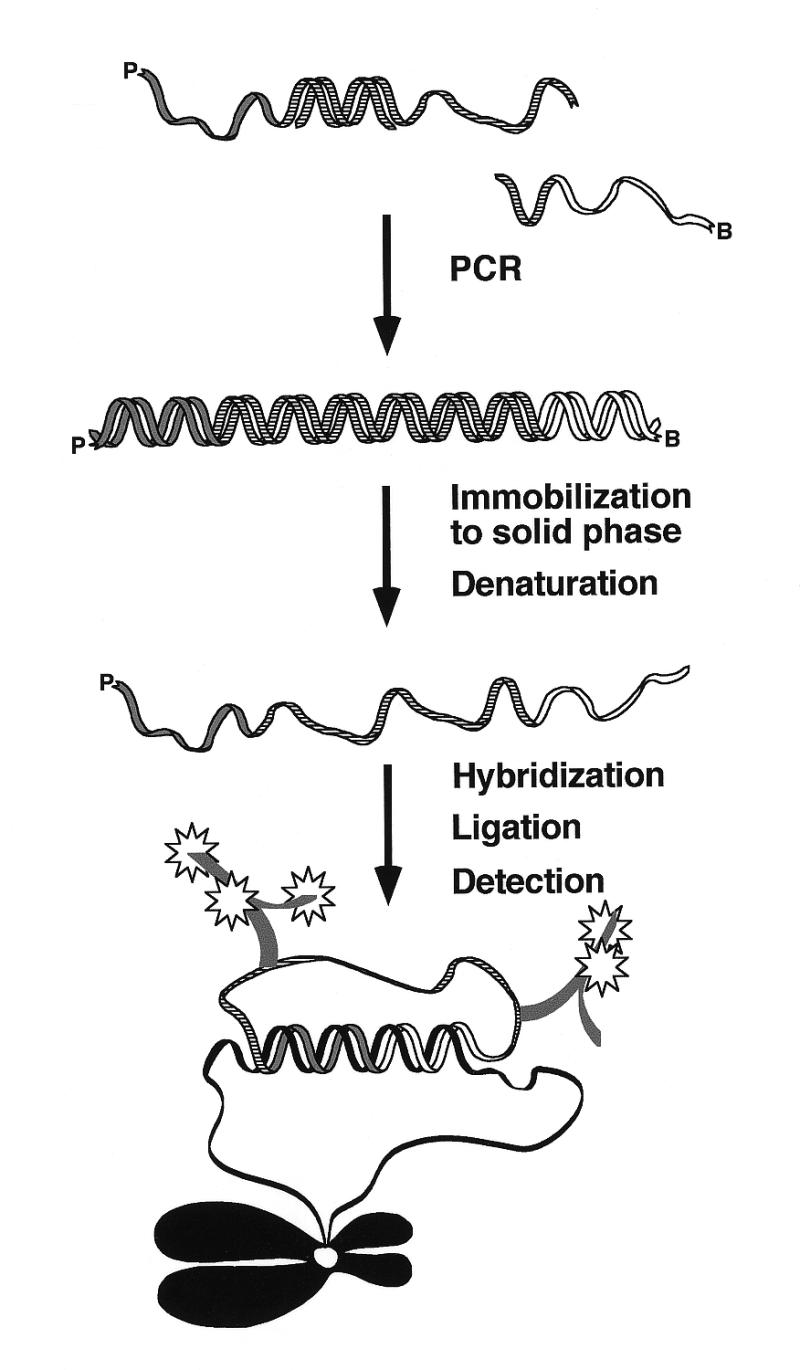Figure 1.

A schematic overview of enzymatic synthesis of padlock probes. Two primers are used to amplify an oligonucleotide template by PCR. The 5′-phosphorylated primer, marked P, will define the 5′-end of the padlock. The complement of the 5′-biotinylated primer, marked B, will form the 3′-end of the padlock. The double-stranded PCR product is immobilized on paramagnetic streptavidin-coated beads via the 5′-biotin and the complementary strand is released under denaturing conditions. The single-stranded padlock probe is hybridized to the target sequence, ligated and detected using fluorescent-labeled antibodies against labeled nucleotides incorporated during PCR.
